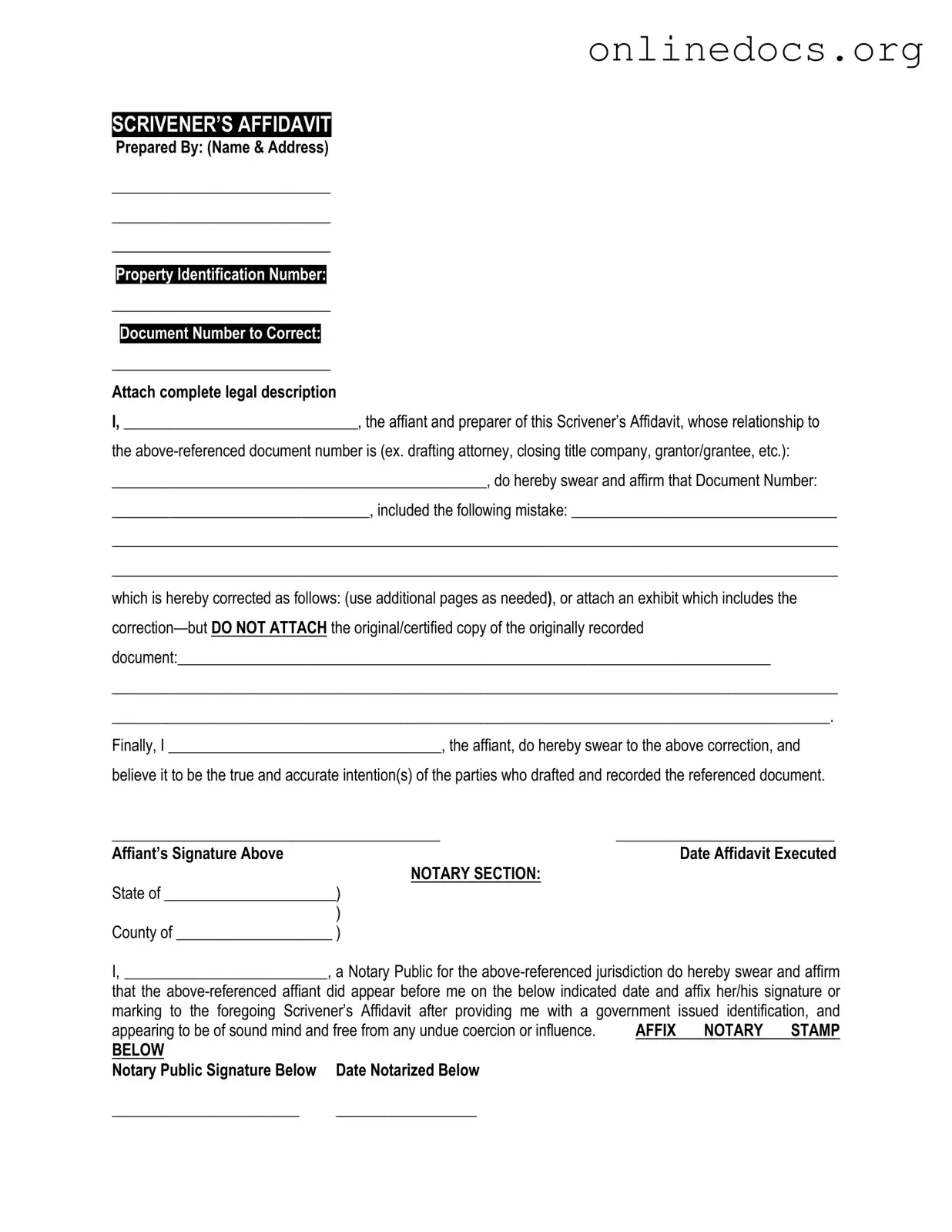The Affidavit of Identity serves a similar purpose to the Scrivener's Affidavit. It is used to verify an individual's identity in legal situations. This document often accompanies other legal filings to confirm that the person signing is indeed who they claim to be. Like the Scrivener's Affidavit, it requires the affiant to provide personal information and a sworn statement, enhancing the credibility of the document.
The Affidavit of Service is another document that shares similarities. This affidavit verifies that a legal document was delivered to a party. The individual who serves the documents must complete this affidavit to confirm that the service was executed properly. Both documents require a sworn statement and can be used in court to establish the validity of actions taken.
The Power of Attorney document allows one person to act on behalf of another in legal matters. While it has a different function, it requires a formal declaration of intent, similar to the Scrivener's Affidavit. Both documents need to be signed and may require witnesses or notarization to be legally binding.
The Certificate of Authenticity serves a similar role in verifying the legitimacy of a document or item. While it is often used in art and collectibles, it shares the essence of providing assurance and credibility. Like the Scrivener's Affidavit, it is a formal declaration that supports claims made about the subject in question.
The Statement of Facts outlines specific details regarding a situation or transaction. While it is not sworn, it serves to present information clearly and can be used to support legal arguments. Both documents aim to clarify circumstances, though the Statement of Facts may not carry the same legal weight as an affidavit.
For those involved in buying or selling personal property in Pennsylvania, understanding the importance of the Bill of Sale is crucial. This document not only provides a record of ownership transfer but also plays a significant role in formalizing the transaction. For additional information on how to properly utilize this important document, you can visit legalformspdf.com.
A Warranty Deed is a document that transfers property ownership and guarantees that the title is clear. It includes sworn statements about the property, similar to the Scrivener's Affidavit. Both documents require accurate information and are often used in real estate transactions to ensure transparency and legality.
The Release of Liability form is used to relinquish any claims against a party. It requires a signature and acknowledgment of risks, akin to the sworn statements found in a Scrivener's Affidavit. Both documents aim to protect parties involved by clarifying rights and responsibilities.
The Non-Disclosure Agreement (NDA) protects confidential information between parties. While it does not require a sworn statement, it serves to formalize an understanding, similar to the purpose of the Scrivener's Affidavit. Both documents seek to establish trust and clarity in legal relationships.
Lastly, the Consent Form is used to obtain permission for specific actions, often in medical or legal contexts. It shares the characteristic of requiring clear acknowledgment and agreement, much like the Scrivener's Affidavit. Both documents ensure that parties are informed and have voluntarily agreed to the terms presented.
